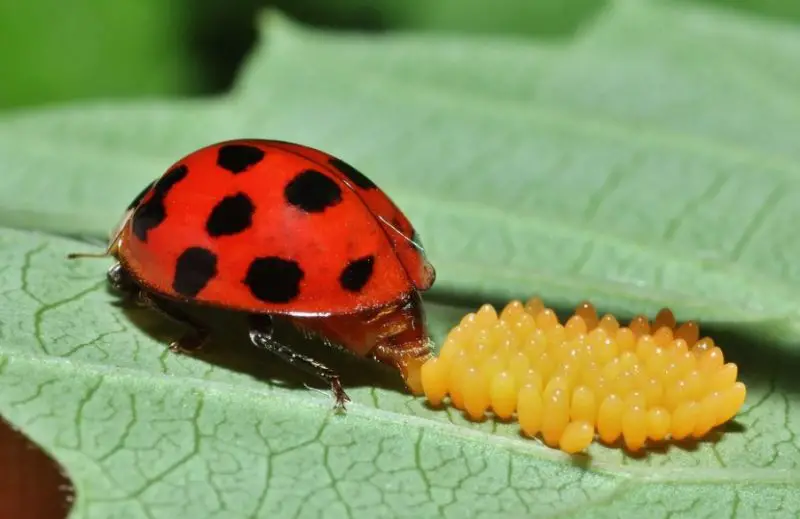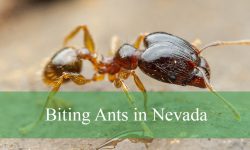Ladybugs are often regarded as charming little creatures that flutter around our gardens, but did you know that their life cycle begins long before they take flight? The journey of a ladybug starts with its eggs, and these tiny, often overlooked wonders are packed with fascinating secrets.
In this comprehensive article, we will explore everything you need to know about ladybug eggs, their role in the ecosystem, how to spot them, and how to help them thrive.
What Are Ladybug Eggs?

Ladybug eggs are the first stage in the life cycle of these beneficial insects. The female ladybug lays her eggs in clusters, usually on the underside of leaves or on plant stems, typically in areas where aphids or other small insects are abundant. These tiny, oval-shaped eggs are usually yellow or orange and can sometimes be hard to spot with the naked eye due to their size. Despite their small appearance, ladybug eggs are essential to the health of your garden and the broader ecosystem.
The Life Cycle of a Ladybug
The journey from a ladybug egg to an adult ladybug is fascinating and involves several stages of development. Understanding the life cycle can help you better appreciate these helpful insects and why they are such valuable allies in natural pest control.
1. Egg Stage
As mentioned, ladybug eggs are laid in clusters, often on plants that are infested with aphids or other small pests. This strategic placement ensures that when the larvae hatch, they will have an abundant food supply nearby. The egg stage lasts for about 3-7 days, depending on environmental factors such as temperature and humidity.
2. Larvae Stage
After the eggs hatch, the young ladybug larvae emerge. The larvae resemble tiny alligators with segmented bodies and are typically black or dark-colored, with orange or yellow spots. At this stage, they are voracious eaters and will immediately begin feeding on aphids, mites, and other small insects. This is when ladybugs are particularly helpful to gardeners, as their larvae consume large quantities of pests, helping to keep the plant population healthy and free from harmful infestations.
3. Pupa Stage
Once the larvae have grown large enough, they enter the pupa stage, where they stop feeding and form a protective cocoon around themselves. This stage typically lasts between 5 and 10 days. Inside the pupa, the larvae undergo a complete transformation, developing the body structures necessary for becoming an adult ladybug.
4. Adult Ladybug Stage
After the pupal stage, the ladybug emerges as an adult, initially soft and pale. Over the next few hours, its exoskeleton hardens, and it takes on the familiar red, orange, or yellow coloration with black spots. Adult ladybugs are known for their ability to fly, and they continue their role as pest controllers, feeding on aphids and other small insects throughout their adult lives.
Where Do Ladybug Eggs Come From?
The primary source of ladybug eggs is the female ladybug, who typically lays her eggs in clusters on the undersides of leaves or plants that are infested with aphids, scale insects, or other pests. The eggs are often laid in locations where food will be readily available for the hatching larvae. Female ladybugs can lay hundreds of eggs at a time, ensuring that at least some of their offspring will survive to maturity.
Why Are Ladybug Eggs Important for the Ecosystem?
Ladybug eggs play a critical role in maintaining the balance of ecosystems, especially in gardens and agricultural areas. The larvae that hatch from these eggs are natural predators of pests like aphids, which are notorious for damaging plants. By consuming aphids and other pests, ladybugs help reduce the need for chemical pesticides, making them an essential part of organic and sustainable farming practices.
In addition to pest control, ladybugs also contribute to pollination. While not as efficient as bees, ladybugs will occasionally visit flowers for nectar, inadvertently transferring pollen from one flower to another, helping plants reproduce.
How to Spot Ladybug Eggs in Your Garden
If you want to encourage ladybugs to thrive in your garden, the first step is knowing where to find their eggs. Spotting ladybug eggs can be a little tricky, as they are small and often blend in with their surroundings. Here are some tips to help you find ladybug eggs:
1. Look on the Underside of Leaves
Ladybug eggs are typically laid on the underside of leaves, where they are less likely to be disturbed by the wind or predators. Check your plants, especially those that are infested with aphids or other small pests.
2. Check for Clusters of Eggs
Ladybug eggs are usually laid in clusters, so if you spot a small group of yellow or orange eggs on the underside of a leaf, you’ve likely found ladybug eggs. These clusters can range from a few eggs to dozens, depending on the species of ladybug.
3. Inspect Plants with Pest Problems
If you have plants that are dealing with aphid infestations or other small pests, there’s a good chance that ladybugs have already started laying their eggs nearby. Look closely at these plants for clusters of eggs.
4. Be Patient and Observant
Ladybug eggs are small and may be easy to miss, especially if you’re not looking closely. Take your time and carefully examine the leaves and stems of your plants to spot any clusters of eggs.
How to Encourage Ladybug Eggs in Your Garden
If you want to create an environment that encourages ladybugs to lay their eggs, there are a few simple steps you can take:
1. Plant Pest-Attracting Plants
Ladybugs are more likely to lay their eggs in areas where food sources are abundant. By planting aphid-friendly plants like roses, peas, and lettuce, you can attract aphids and other pests, which will in turn attract ladybugs.
2. Avoid Using Chemical Pesticides
Chemical pesticides not only harm the pests but can also harm beneficial insects like ladybugs. To encourage ladybugs to thrive, avoid using chemical pesticides in your garden. Instead, opt for natural pest control methods like introducing ladybugs or using neem oil.
3. Provide Shelter for Ladybugs
Ladybugs need shelter to thrive, so consider planting native plants that provide both food and a safe place for ladybugs to rest. You can also create a small ladybug house with a wooden structure or small pile of leaves and twigs.
4. Keep Your Garden Healthy
A healthy garden with a diverse range of plants will naturally attract ladybugs. Avoid monoculture planting, as a diverse ecosystem is more likely to support a variety of beneficial insects, including ladybugs.
Conclusion
Ladybug eggs are the starting point of one of nature’s most fascinating and helpful creatures. From their humble beginnings, ladybugs evolve into powerful pest controllers that benefit gardens and ecosystems worldwide. By understanding the role of ladybug eggs and how to encourage them in your garden, you can help support these valuable insects and promote a healthier, more sustainable environment. Whether you’re a seasoned gardener or a beginner, appreciating the life cycle of ladybugs is a great way to enhance your knowledge of the natural world and contribute to the well-being of your garden.
Embrace the secrets of ladybug eggs, and let these tiny wonders help you create a thriving, chemical-free garden!






